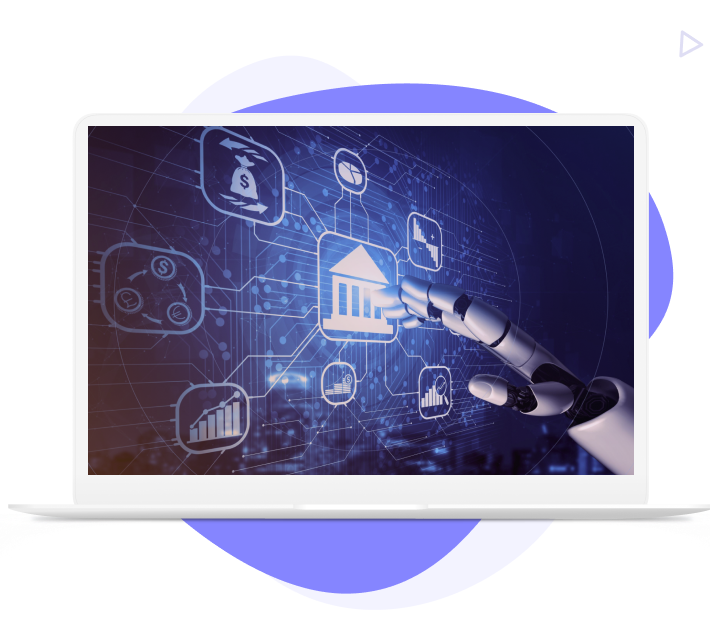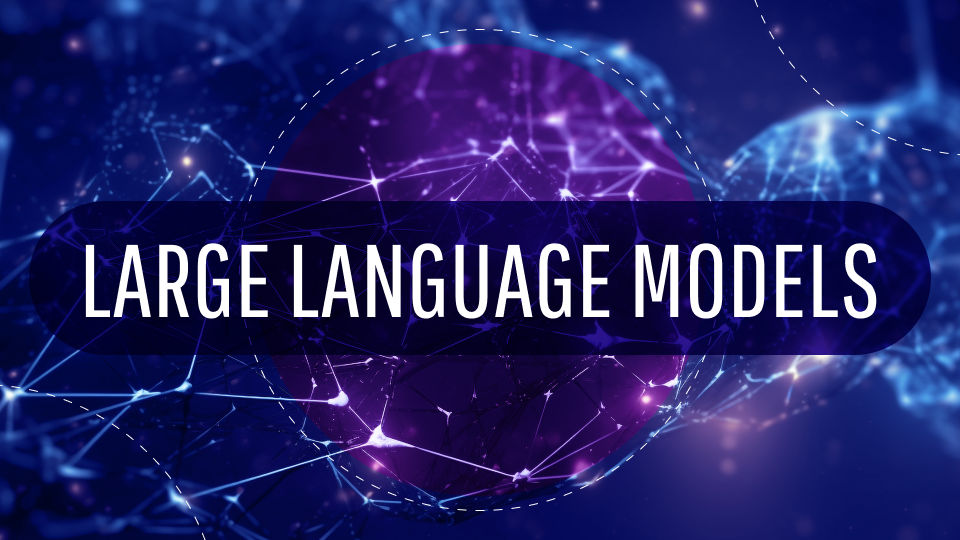Key takeaways
- MCP (Model Context Protocol), introduced by Anthropic, standardizes how AI agents access enterprise systems through one governed interface, replacing brittle one-off connectors.
- In real workflows (e.g., Blender for design), MCP offloads routine exports, renders, and conversions to an agent so specialists focus on creative work while non-designers request safe, scoped outputs.
- Across manufacturing, healthcare, and R&D, MCP orchestrates SCADA/MES/ERP, EHR modules, and ELNs/trial databases with permissioned calls and uniform audit logs, improving cycle time and compliance.
- Versus screen control or ad-hoc APIs, MCP provides consistent authentication, granular permissions, and auditable actions via reusable MCP servers implemented once per system.
- A pragmatic path is to wrap one high-frequency workflow first, measure time saved and error reduction, then expand coverage without re-engineering governance.
- Geniusee designs, builds, and runs MCP servers in production, from pilot to scale, with reference templates, security controls, and a rollout plan tailored to your stack.
Every enterprise leader exploring AI adoption runs into the same roadblock: connecting models to the systems that actually run the business.
A CIO wants an AI assistant to help operations managers pull supply chain data, but it lives across SAP, Salesforce, and a custom database.
A CTO pilots a generative design tool, only to find it needs separate connectors for every version of software and internal asset repository. Each integration means weeks of custom coding, fragile connectors that break with every update. Not to mention governance risks when compliance teams ask: “Who authorized the AI to touch this system?”
This is the core problem Model Context Protocol (MCP) was built to solve.
What is MCP?
MCP is an open, standardized way for AI apps to plug into external tools and data sources through a single, consistent interface — think of it like a USB-C port for AI. Introduced by Anthropic, it defines how models discover and use tools, share context, and act securely across different systems.
MCP provides a secure and easy way for AI agents to interact with enterprise tools and data without the necessity for point-to-point wiring, fragile screen control, or reinventing governance for every new integration.
In daily tasks, AI agents turn plain-language requests into actions. People don’t hunt through dashboards or relearn interfaces every quarter. A simple prompt like “pull last week’s sales by region and flag anomalies” replaces ten clicks across three apps. The hard part is to provide completely safe access: who can call which function, on what data, under what conditions, and how you prove it later. Here is where MCP comes handy. It acts as the orchestration layer for safe access: it mediates credentials, validates inputs, and routes each request to the right system. MCP also ensures that multiple agents can coordinate actions without overprivileged access or blind spots.
At Geniusee, we’ve already started applying MCP in enterprise settings to integrate AI cleanly with existing infrastructure instead of forcing legacy systems to adapt. In the next sections, we’ll look at before-and-after workflows, industry-specific examples, and security considerations to show how MCP transforms real business operations and unlocks measurable impact.
Current vs. MCP-powered workflows: the designer’s example
Design teams are a good example of how MCP changes work. Blender is a powerful but complex tool, and designers often spend hours on routine steps like exporting files, adjusting lighting, or applying textures. Non-designers, such as product managers or marketers, can’t use the tool at all and must wait for specialists.
With MCP, the workflow shifts from tool mastery to simple requests. A designer can say, “Render this model in three lighting variations,” and the MCP-powered agent handles the technical steps. Even non-designers can generate basic outputs, like previews or format conversions, without blocking the design team. Here’s a side-by-side comparison of the benefits of implementing MCP in this very professional field.
Without MCP | With MCP |
Tool-centric, expert-dependent | Frictionless, outcome-oriented |
|
|
The key distinction is that MCP doesn’t turn non-designers into professionals overnight. One definitely has to envision the result one wants to get even with immense help from AI. Instead, MCP removes friction from repetitive tasks so experts can concentrate on high-value creative work.
With MCP, design teams see a measurable productivity boost. Designers spend less time on repetitive technical steps and more on creativity, which accelerates iteration cycles and shortens delivery timelines.


Thank you for Subscription!
Impact across industries (with real-world flavor)
While creative tools like Blender offer a vivid illustration, MCP’s real leverage lies in industries with complex data, multiple systems, and regulatory constraints. Below are three sharper examples that show how MCP can transform workflows in manufacturing, healthcare, and R&D.
Manufacturing: from isolated dashboards to unified orchestration
Predictive maintenance, anomaly detection, and smart scheduling are already core elements of Industry 4.0. Factories today rely on SCADA systems, MES platforms, and ERP/CMMS tools to monitor sensors, forecast failures, and plan maintenance. The challenge is that these insights are often locked inside separate dashboards.
Operators must jump between systems, export reports, or request IT support to stitch the data together. Adding a new sensor or analytics module often requires custom point-to-point integrations, which are fragile and expensive to maintain.
With MCP, this fragmented landscape becomes orchestrated. Instead of manually navigating three platforms, an operator can say: “Show me temperature trends and error codes for Machine X over the past 72 hours, run failure prediction, and schedule preventive maintenance if needed.”
Here’s the difference:
The MCP agent pulls sensor trends from SCADA, runs analytics through the predictive module, checks technician availability in the CMMS, and validates spare part stock in the ERP.
It then proposes a unified action plan: schedule the job, pre-order parts if required, and log the decision for compliance — all through a single interaction.
If a new sensor or tool is introduced, it’s simply exposed via MCP as another service endpoint, not a bespoke integration project.
The result is not a reinvention of predictive maintenance; it’s a seamless layer of orchestration that reduces integration overhead, speeds up decision-making, and lowers the cost of scaling Industry 4.0 practices across multiple sites.
Healthcare сase study: clinical data retrieval with MCP
Hospitals have long struggled with the usability of electronic health record (EHR) systems. Clinicians spend valuable time clicking through multiple screens to pull vitals, lab results, and imaging reports, often under pressure during patient rounds.
Large language models (LLMs) have the potential to help, but connecting them safely to EHR systems has been a barrier due to security, compliance, and integration complexity. For example, the Health Insurance Portability and Accountability Act (HIPAA) in the U.S. has very strict regulations regarding patient information access as does the General Data Protection Regulation (GDPR) in the EU.
A recent pilot study tested a new approach: integrating an LLM with hospital EHRs through the Model Context Protocol. MCP acted as the secure layer between the AI and the EHR system, ensuring that every request was structured, permissioned, and logged. The system was able to correctly fetch patient metrics such as blood pressure readings, lab panels, and imaging results with near-gold-standard accuracy across most tasks.
In practice, this transformed how clinicians worked. As an example, instead of navigating menus, a doctor could simply say: “For patient Y, retrieve blood pressure, lab results, and imaging between March and June and highlight any trends.” The MCP-powered agent then pulls the data, filters and summarizes it, and presents a clean report, all within a compliant, auditable workflow.
The scope of possible inquiries to AI is much larger than the above example. You can also add that many requests will involve richer inputs, like asking an LLM to produce more standardized, descriptive image captions. That’s increasingly feasible because modern LLMs are multimodal (images, video, text), and their visual understanding capabilities are rapidly expanding.
For healthcare leaders, the impact is twofold: efficiency gains for staff and stronger governance over how AI interacts with sensitive patient data. MCP didn’t just make electronic health records easier to use; it provided a scalable, compliant framework for bringing AI into one of the most regulated environments in the world.
Research and development: from fragmented data to unified, compliant workflows
In life sciences and advanced research, data is scattered across electronic lab notebooks (ELNs), simulation tools, clinical trial databases, and external literature sources. A single researcher may need to pull assay results from an ELN, compare them with trial outcomes in a clinical system, and cross-check them against PubMed articles.
Many labs have tried quick fixes by wiring an LLM directly to one or two systems, but each connector is bespoke. If the ELN updates its schema, the integration breaks. If a new compliance rule is introduced, security has to be re-engineered from scratch. At scale, this patchwork becomes unmanageable.
MCP changes this dynamic by offering a standardized, governed framework for connecting AI agents to scientific systems. Each lab system exposes its functions once as an MCP “server,” and any compliant agent can interact with it.
Governance features — authentication, permissions, and audit logging — are built into the protocol itself, so compliance isn’t reinvented for every integration. When a new database or simulation tool is added, it plugs into the same framework without disrupting workflows.

More to explore
How AI agents reshape finance and banking operations
AI agents transform the finance and banking sectors by automating repetitive tasks, analyzing financial data, and helping teams with strategic decisions. Today, they go beyond automation and can enhance finance teams' impact. See how.
Check outHow MCP differs from screen control or APIs
For many CTOs, the first reaction to MCP is: “But we already have APIs.” And that’s true; every enterprise system, from Salesforce to SAP, comes with its own API. The challenge is that APIs are not consistent across vendors.
One might use JSON, another XML, and another GraphQL, each with unique authentication flows, rate limits, and quirks. Developer tools like Cursor help teams scaffold MCP servers faster, but the protocol itself is what standardizes capabilities, permissions, and audits across systems.
To make an AI agent work across all of them, teams must build and maintain dozens of bespoke connectors. That’s manageable in a pilot, but at enterprise scale, it quickly becomes unsustainable.
Some firms try “screen control,” letting AI click through interfaces like a human. But this is fragile, insecure, and impossible to audit — a non-starter for serious enterprise use.
MCP takes a different path. It’s not another vendor API but a protocol standard. Systems expose themselves once as MCP servers, declaring their capabilities, parameters, and permissions. AI agents act as MCP clients, interpreting natural language requests and turning them into the correct, authorized calls.
For a CTO, this means governance and audit controls are built into the protocol, integration sprawl is dramatically reduced, and when APIs evolve, only the MCP server needs updating, not every connector.
How AI connects to enterprise systems: options compared
Dimension | Screen control | APIs | MCP |
Integration method | AI “clicks around” in a UI, simulating a human | System exposes structured endpoints (REST, GraphQL, SOAP, etc.) | Systems expose themselves once as MCP servers with declared capabilities |
Stability | Fragile – breaks if the UI changes | Stable per system, but each API is different and evolves on its own | Stable – MCP acts as a uniform wrapper; clients adapt via the protocol |
Security | Very low – AI sees the whole screen, can click anything | Medium – you can enforce auth per API, but it's inconsistent across systems | High–governance (permissions, logging, audit) is baked into the protocol |
Scalability | Not scalable at all | Works for a few systems; becomes a hairball of N×M connectors at scale | Scales cleanly – publish systems once as MCP servers; reuse across all agents |
Governance / Auditability | Impossible to track precisely what AI did | Depends on each system’s API logging; no consistency | Uniform audit trail – every call is logged and permission-checked |
Developer effort | Low effort to start (just give AI a screen) | High effort – custom code to map LLM → API for each system | Moderate upfront – implement each system once as the MCP server, then reuse |
Natural language support | Poor – AI must simulate clicks/text entry | None – APIs expect structured payloads; engineers must translate prompts | Native – LLM interprets natural language, maps to MCP-declared functions |
Enterprise readiness | Not viable | Point solutions only, costly to scale | Enterprise-ready: secure, standardized, and auditable |
Looking for the right way to implement MCP at your enterprise?
At Geniusee, we design, build, and run MCP servers in production — from consulting or building the first workflow to multi-system rollout — across EHR modules, ERPs, ELNs, and design tools, including regulated environments.
And here's what we recommend: start with one high-leverage workflow, model permissions precisely (who can call what, on which resources, with what parameters), and treat observability as a first-class requirement so every action is attributable and auditable.
A practical way to begin:
Identify a single, high-frequency workflow with measurable cycle time or handoff delays.
Map the participating systems and the exact functions you need to expose (read, search, create, or update).
Define the security model up front: identities, scopes, data redaction rules, and logging targets.
Implement one MCP server per system, expose only the minimal safe surface, and attach clear schemas and descriptions.
Pilot with a small user group, track time saved, error rates, and compliance events, then harden for production and expand to adjacent workflows.
Stand up a lightweight test harness for each capability and automate regression checks with patterns from AI in software testing.
If you want professional support, Geniusee provides end-to-end AI app development and MCP delivery: reference server templates, security controls, production hardening, observability setup, and a scale plan tailored to your stack so you validate quickly and operate reliably at scale.
FAQs
What is MCP in AI?
Model Context Protocol (MCP) is an open, standardized way for AI applications and agents to plug into external tools and data sources through one consistent interface, like “USB-C for AI.” Instead of wiring a new custom connector for every system, a system exposes its capabilities once as an MCP server (with clear functions, parameters, and permissions). Any MCP-aware AI client can then safely discover and use those capabilities.
Why does MCP matter?
Because enterprise AI stalls at integration and governance. MCP provides consistent authentication, granular permissions, and auditable actions via reusable MCP servers implemented once per system. In practice, that means faster delivery, better scalability, lower risk, and the possibility for the team to focus on high-value work while routine steps are orchestrated by agents.
How does MCP work?
MCP works by having each system expose its functions once as an MCP server (with clear schemas, scopes, and guardrails), while AI agents act as MCP clients that translate natural-language requests into authorized calls. Governance — authentication, permissions, and audit — is enforced uniformly across systems. The result is orchestrated operations: you get faster, coordinated decisions without fragile screen-clicking or custom one-off connectors. And you can prove exactly what the AI did.
Who creates and maintains MCP servers?
MCP server ownership is shared: system owners publish and version the server for their app or datastore; security/compliance defines identities, scopes, logging, and data rules; and AI/platform engineering runs shared MCP client tooling, observability, and test harnesses. A delivery partner leads the heavy lifting: architecture, reference templates, security controls, production hardening, and phased rollout. At Geniusee, we design, build, and run MCP servers in production, from the first workflow to multi-system deployments across EHRs, ERPs, ELNs, and design tools, including regulated environments.





















